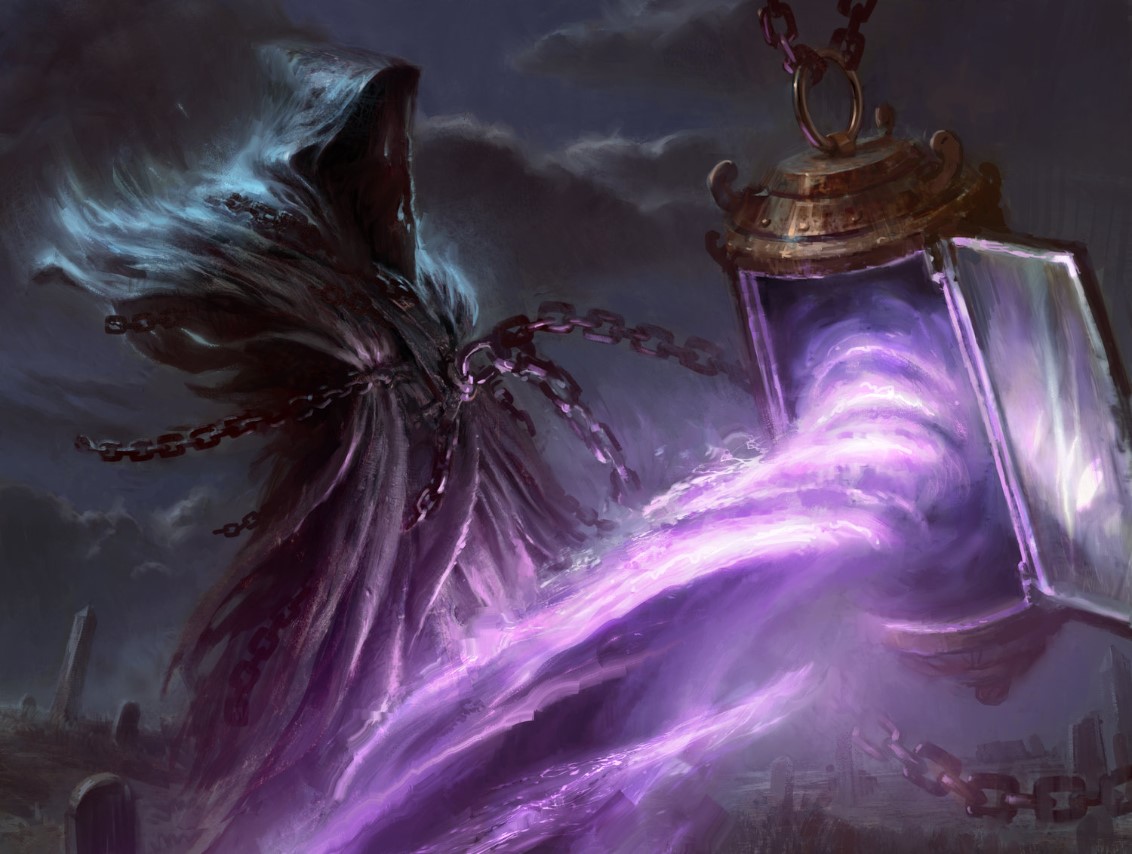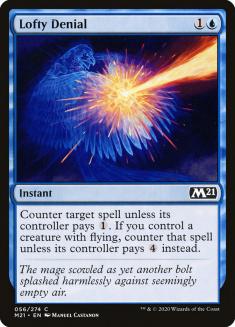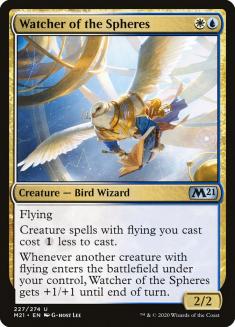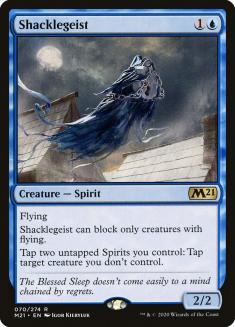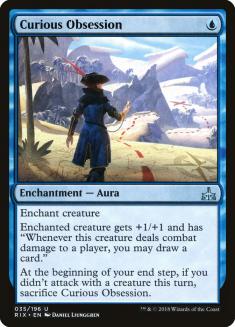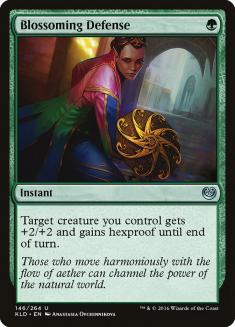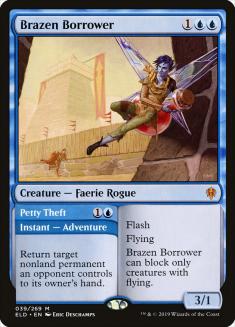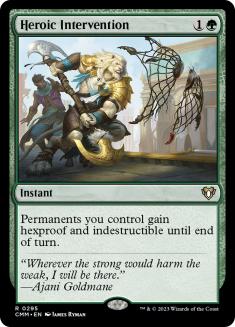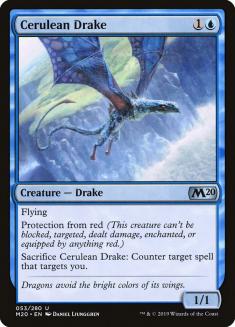The hard reset to Pioneer brought about by last week’s bans couldn’t have come at a better time. Last weekend was Showcase Challenge weekend on Magic Online (MTGO), meaning that there was an immediate major tournament to put the post-combo metagame to the test. The results are incredibly promising for the format, with a great deal of diversity in the decks at the top of the standings.
The Top 8 featured six or seven different archetypes depending on how you want to split hairs, a great sign that should encourage players to get back into the format, especially considering that those archetypes represent a diverse range of strategies from control to midrange to aggro of varying flavors.
But the breakout archetype put new spins on a classic: Spirits. Bant Spirits was among the best-performing decks during the Players Tour events that saw Lotus Breach and Dimir Inverter begin their ascension to the top of the metagame, but the tribe took a different trajectory, slowly fading from prominence as other decks adapted to its straightforward, albeit tricky, gameplan.
What Let Spirits Reemerge?
First is the printing of Lofty Denial.
I’ve been high on this card from the beginning and I’m glad to see it get its due. I actually wrote about its potential in Pioneer several weeks ago, highlighting various flash strategies that the flexible counterspell could elevate to prominence. I knew that Spirits could be a good home for the card as well, and as it turns out, the tribal synergies make it the best home, even if you sacrifice individual card power level.
Cards like Mausoleum Wanderer, Rattlechains, and Spell Queller are already solid on their own, but the really important addition from going tribal is Supreme Phantom. These decks need to turn the corner quickly and end the game before any powerful threat resolves and threatens to undo all the work you’ve done building an advantage. Cards like Uro, Titan of Nature’s Wrath; Bring to Light; and Karn, the Great Creator can absolutely take over even if you have a sizable advantage, and you don’t have enough total counterspells to stop everything.
When you don’t have much room for answers, the answers you do have better be versatile.
Sure, you could build a deck that’s more counterspell-heavy, but that build would be much weaker against low-curve aggro decks where you start out on the back foot, playing defensively until your creatures take over the battlefield.
Balancing these issues requires a card like Supreme Phantom that for only two mana can immediately increase your clock by at least a turn if not more, or can come down and let your creatures dominate combat against aggressive decks. Flash creatures like the Spirits you’re playing aren’t known for their size, so the Anthem effect bringing you from three or so power to six or more is a huge jump that condenses the game and stops your opponent from properly measuring their threats to eventually sneak one through your counter wall.
And that brings us back to the power of Lofty Denial. Beforehand, Spirits was much more of an aggro deck with minimal disruption. Spell Queller, Mausoleum Wanderer, and Rattlechains can act as counterspells, but they are narrow in their application. Lofty Denial gives the deck a flexible but powerful counterspell that can slow down an aggro deck, protect you from lethal burn, and still hit a powerful planeswalker or Uro later in the game.
When you don’t have much room for answers, the answers you do have better be versatile. Lofty Denial provides that versatility without sacrificing anything in terms of efficiency, which is important for an aggressive deck. With Lofty Denial, Spirits can play the gameplan it really wants to, which is that of a disruptive aggro deck. Do you cast your early threat into a Force Spike on Turn 2 or let them cleanly land Rattlechains if they have it and fall further behind? This is yet another difficult question that Spirits opponents will have to answer.
Second is the emerging metagame, which suits Spirits in multiple ways. The first thing I notice is that there are a lot of decks that are tapping out for five-mana cards. In the rest of the Showcase Challenge Top 8, you see Niv-Mizzet Reborn; Nissa, Who Shakes the World; Teferi, Hero of Dominaria; and Elspeth Conquers Death. Decks that play at instant speed with cheap interaction love it when their opponents are casting expensive sorceries, because they can double-spell with a cheap counterspell and a threat.
Previously, Spell Queller missed these expensive cards, so in Game 1 you were mostly helpless, but Lofty Denial is a great answer and forces these decks to shift away from their normal gameplan, just as they should be doing against an aggressive deck with counterspells.
The Two Builds of Spirits
Previously, when you thought Spirits in Pioneer the only option was Bant. Spirits are based in Azorius and green provided access to the powerful Collected Company. But with Lofty Denial, Collected Company becomes a harder sell. You can make it work in the maindeck, but when you want to be sideboarding in additional interaction, Collected Company quickly becomes a liability with the chance of hitting fewer than two creatures increasing.
So most lists have cut the green entirely and gone for straight Azorius. Consider the fifth-place list from the Showcase Challenge:
Creatures (34)
- 4 Rattlechains
- 4 Spell Queller
- 3 Selfless Spirit
- 4 Mausoleum Wanderer
- 4 Supreme Phantom
- 4 Empyrean Eagle
- 4 Spectral Sailor
- 3 Watcher of the Spheres
- 4 Shacklegeist
Lands (10)
Spells (16)
- 4 Plains
- 8 Island
- 4 Lofty Denial

Nothing here looks out of place beside the Watcher of the Spheres, and once you consider it the card makes a lot more sense. Losing Collected Company does deprive you of a card that flooded the battlefield, often providing five or six mana of value for only four mana. Without it, the Spirits deck can have a clunky curve, not double-spelling until Turn 5.
Watcher of the Spheres offers you that ability to flood the battlefield. Casting it on Turn 2 sets you up to double-spell on Turn 3 and to keep doing so from then on. That in turn pumps Watcher into a sizable threat, so it’s clear that Watcher is great at letting you turn the corner from defense to offense, or simply letting you create a huge advantage on the early turns against slower decks.
To supplement Watcher, Shacklegeist has been increased to a four-of, completely replacing Nebelgast Herald. I’m a big fan of this change, since this deck operates a bit more at sorcery speed anyway, and reducing from two mana to one is a much bigger deal than going from three to two. Once Watcher is on the battlefield, this list operates at a ludicrous level of mana efficiency, making it easy to hold up your disruptive elements while also developing a substantial battlefield.
In the sideboard, I like seeing Teferi, Time Raveler, which is a huge mirror breaker, as well as Devout Decree. The instant-speed removal looks nice on paper since you have plenty of flash threats and can thus leave up both, but against aggro decks you’re often operating even more at sorcery speed, since establishing your Anthem effects and building a battlefield is so important, and the versatility of Devout Decree exiling recursive threats and Sorin, Imperious Bloodlord is quite valuable.
This list is clearly concerned with its aggro matchups given how much removal is in the sideboard, but I’d like to see some additional counterspells to solidify the midrange matchups. Cards like Disdainful Stroke can help a lot there.
The Newcomer
Azorius is the new default build of Spirits, completely supplanting Bant even before last week’s ban. But this weekend saw the emergence of a new build, one that eschews white for green and plays out quite differently:
Creatures (26)
- 4 Rattlechains
- 4 Mausoleum Wanderer
- 4 Nebelgast Herald
- 2 Siren Stormtamer
- 4 Supreme Phantom
- 4 Spectral Sailor
- 4 Brazen Borrower
Lands (15)
Spells (19)

This deck should remind you of the old Mono-Blue Aggro deck from Mythic Championship I, so it’s no surprise that I’m smitten. Spirits is such a natural home for Curious Obsession because the creatures provide a bunch of inherent protection, but Blossoming Defense really completes the package, giving you a great protection spell that makes it much easier to set up the combo draw of one-drop + Curious Obsession + protection. Keen Sense as an additional Curious Obsession further increases the consistency of this opening.
Sacrificing white means you lose out on Selfless Spirit, Spell Queller, and Empyrean Eagle. Selfless Spirit has long been one of the weakest cards in Spirits so that’s not a big deal to me, but the other two are significant. That said, this deck is looking to play protect-the-queen more often than not, making Anthem effects less important. Also, this style of deck wants to play a lower curve than Azorius anyway, so losing out on three-drops isn’t as important as it might seem.
Brazen Borrower comes in to supplement Nebelgast Herald here, offering a pair of creatures that push blockers out of the way, letting your more curious Spirits roam the battlefield with impunity. With a few extra cards drawn you can start flooding the battlefield with creatures and closing the game out, but that isn’t nearly as important in this deck as it is in Azorius. It’s possible, against aggro decks for example, that you want to trade off those extra creatures to keep your opponent’s battlefield in check, knowing that your card advantage engine gives you a huge advantage in an attrition game.
The lower curve here lets you also play a lower land count, which in Azorius would be awkward because of the need to play Port Town and Glacial Fortress, but with access to a fastland and a painland, the mana is workable here. Still, I’m skeptical of the Mutavaults and Hashep Oasis here in a deck that often wants very specific colors in the early turns. This deck can’t afford to stumble because every extra turn before your battlefield is set up is another turn for your opponent to either find more interaction that you have to play around or develop their own battlefield to race.
Looking at the sideboard, Heroic Intervention is a card I’ve long scorned, but in this deck it makes sense because without Spell Queller and Selfless Spirit you’re much more vulnerable to Supreme Verdict. That card isn’t particularly popular right now, but I’ve been receiving glowing praise of the Jeskai Fires deck that Corey Baumeister took to ninth place in the Showcase Challenge, so I’d expect it to pick up in popularity. Supreme Verdict is their absolute best piece of interaction against Spirits, so having a plan for it is important.
The card I’m skeptical of is Cerulean Drake, since there doesn’t seem to be much in the way of red decks. Without a second lord, this build of Spirits is more vulnerable to aggro decks of all stripes, so I’d like to see a card that’s more widely applicable. Permeating Mass has seen play in Spirits decks in the past, and fits this deck quite well in my opinion. That’s where I’d start, since Simic isn’t known for its powerful removal options.
Which Version is Better?
This is the $64,000 question. (Zoomers: That was a game show in the 1950s. Look it up.)
Simic has access to better mana, a lower curve, and actual card advantage. Azorius has more powerful creatures, more Anthem effects in creature matchups, and access to better sideboard cards.
With that list, it looks to me like a metagame call. The more spot removal and expensive spells people are playing, the more I want the low curve, card advantage, and protection from Simic. The more I have to worry about creature decks, the more the white cards have value, especially in the mirror.
Given what I saw in the Pioneer Showcase Challenge, right now I’d be siding with Simic. But this is a time of great uncertainty in Pioneer, and I expect the metagame to evolve quickly as new decks are tuned and underperforming decks are left behind. Azorius is a safer choice since I think its matchup spread is better-rounded, so I wouldn’t fault any Spirits player for leaning in that direction, but I’m going to look to take advantage of Simic while it’s still new.
The important part is that Spirits is back, and Pioneer isn’t going to devolve into a field of midrange haymaker battles. The metagame looks diverse, interactive, and fun, which is exactly what it looked like last January before Theros Beyond Death ruined everything. It looks to me like Magic’s newest format is back on track, and I’m looking forward to diving back in head-first.

